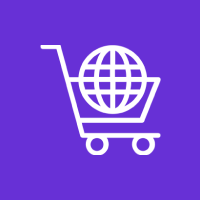In a highly competitive online marketplace, starting an e-commerce website is only the first step. With the thousands of online stores available competing for a users attention, search engines like Google are critical for getting seen. SEO (Search Engine Optimization) is where you will get help. The right types of SEO will help improve your sites position on the search engine, and bring you organic traffic, which will lead to conversions. if you want to set yourself apart and thrive in a crowded marketplace, you have to get e-commerce SEO right.
1. Optimizing Your Product Pages for Visibility
Why It Matters:
Product pages are the central points to your online store. Every product page should act like a separate SEO page that can attract users and convert them.
How to Do it:
- Create descriptive and keyword rich title tags for each product.
- Create unique meta descriptions for each product that highlight the benefits to users and encourage them to click.
- Use SEO friendly URLs (e.g. /mens-running-shoes/nike-airmax), and avoid auto-generated complex strings.
- Use targeted long-tail keywords in product descriptions.
- Use Alt Tags for every image with relevant keywords.
- Use structured data (schema markup) for product information such as ratings, price, and availability.
2. Improve Site Architecture and Navigation
Why it Matters:
A clear, logical site structure will help customers find what they are looking for faster and will help search engines index your pages all the more quickly.
How to Do It:
- Organize content in a hierarchical category structure (e.g. Men > Footwear > Running).
- Use breadcrumb navigation so users (and Google) can see where they are.
- Link related products and categories with internal links.
- Keep your site architecture shallow—no page should be farther from the homepage than three clicks.
Pro Tip: Include an HTML sitemap to make your entire site available to crawlers.
3. Make Your Site Mobile Friendly
Why it Matters:
More than 60% of e-commerce traffic comes from mobile devices. Google also uses mobile-first indexing, which means that your mobile version is the first version that they rank.
How to Do It:
- Use responsive design that adapts layout and images for all screen sizes.
- Minimize the size of menus and buttons for mobile.
- Optimize the mobile checkout process by minimizing steps and friction.
- Do your best to display the correct content on the mobile device without pop-ups or elements that block content on small screens.
Pro Tip: Check your mobile UX regularly using Google’s Mobile-Friendly Test.
4. Improve Your Site Speed to Improve Your Rankings
Why This is Important:
Slowly loading websites frustrate users and lower your rankings. A 1 second load time delay can reduce conversions by many percentages (7% conversions are estimated to be lost per each 1 second delay).
How to Do It:
- Compress and resize your images without losing quality.
- Enable your browser’s cache and utilize content delivery networks (CDN’s).
- Minify your HTML, CSS and Javascripts files.
- Use a fast and reliable hosting provider.
Tools for you to use:
- Google PageSpeed Insights
- GTmetrix
- WebpageTest
5. Pay Attention to Technical SEO for a Stronger Foundation
Why This is Important:
You can have the best content, but if the technical aspect is poor it won’t be seen by search engines.
How to Do It:
- Use schema on any products, reviews or anything in breadcrumb.
- Repair your crawl errors and broken links on a lint basis.
- Create an XML sitemap and submit it using the Google Search Console.
- Ensure that your robots.txt file is optimized and allows search engines to index the right content.
- Use canonical tags to avoid duplicate content issues.
Pro Tip: Run your site with SEO audit or crawler including Screaming Frog or Ahrefs to find the technical aspects and to correct them.
6. Craft High-Value Targeted Content
Why It’s Important: New content and high-value content keeps readers engaged with the potential for ranking on a variety of keywords.
Content Ideas:
- Write guides that classify products based on buying behavior or blog posts that inspect two or more similar products.
- Write how-tos that satisfy readers’ self-interests or pain points for beginner or hesitating consumers in your niche.
- Write posts to answer frequently asked questions from your customers.
- Try case studies, customer stories, or style inspiration articles.
Pro Tip: Use content to rank for informational keywords that bring top-of-funnel traffic who can convert down the road.
7. Obtain High-Quality Backlinks to Increase Authority
Why It’s Important: Backlinking is one of Google’s most important ranking factors. A good backlink profile leads to Domain Authority which translates to higher ranks for your pages.
How to Do It:
- Partner with relevant bloggers and/or influencers to provide review samples of your products.
- Write guest posts on relevant industry sites.
- Get into relevant media articles or industry directories.
- Create link-worthy content (e.g. infographics, statistics, tools).
- Pro Tip: Avoid buying low-quality links, as they can tarnish your site’s reputation and rankings.
8. Use Local SEO (If You Have A Brick and Mortar Store)
Why It Is Important:
If your e-commerce branding includes physical locations, local SEO will help you reach nearby customers that are searching for products on the web.
How To Do It:
- Create or claim your Google Business Profile.
- Check that your NAP (Name, Address, Phone) is consistent across all listings.
- Encourage and manage local reviews.
- Add local business schema to your website.
- Incorporate local-specific keywords in content and metadata.
9. Monitor, Analyze, and Improve
Why It Is Important:
SEO is not a one-off project — it is an ongoing process. Monitoring and reviewing will allow you to identify successes, or group of successes, and know where you can institute improvements.
How To Do It:
- Monitor your traffic and observe behaviour using Google Analytics.
- Use Google Search Console or SEO software programs such as Semrush or Ahrefs to monitor rankings.
- Run regular SEO audits.
- Try A/B testing to product page changes, titles and layouts.
Pro Tip: Create KPI’s for SEO, such as organic traffic growth, keyword ranking improvements and conversion rates within the sites scores.
Conclusion: Invest in SEO to Future-Proof Your E-commerce Business
SEO isn’t a luxury—it’s a necessity for e-commerce success. By optimizing your store across technical, content, and off-page SEO strategies, you’ll not only improve your search rankings but also create a smoother, more valuable experience for your customers. Start with the basics, track your progress, and keep refining your approach to stay ahead of competitors and search engine updates.
Contact Us Today













 Database Development
Database Development












































